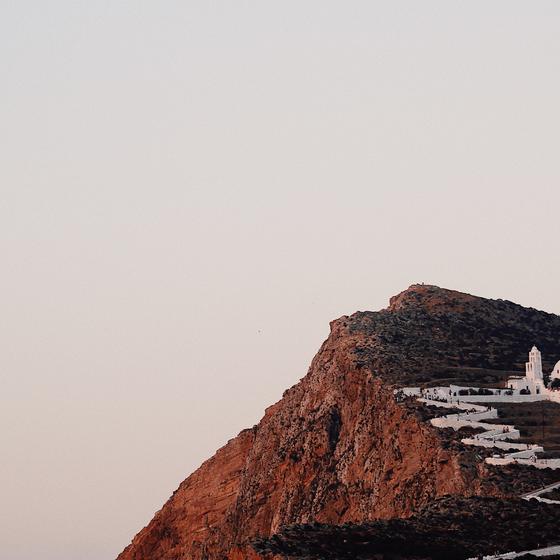Greek hotelier Kalia Konstantinidou shares her love of the sunny Cycladic isle, with pointers on where to find the best artisan studios, dance floors and some of the sweetest mangos you’ll taste anywhere
05 May, 2023

Santorini's showgirl beauty and Mykonos' hedonistic allure might once have got all the attention in the Cyclades, but their oft-overlooked neighbouring island, Paros, is charming a new generation of Hellenic holidayers as the 2023 summer season arrives. The island, about three hours by fast ferry from Athens' Piraeus port, is typically Elysian - bougainvillaea-draped homes, fresh seafood and wide, soft-sand beaches - but a steady loyalty offered by Greek regulars ensures its cosmopolitan buzz is as strong as the seductiveness of its sun-baked shores.


Acron Villas, left, and Konstantinidou
Kalia Konstantinidou has been visiting since childhood, spending family holidays and teenage summers exploring both the island's picturesque edges and its thrumming nocturnal side. Now the founder of one of Greece's coolest hotel brands, the Empiria Group, Konstantinidou returned last year to open the company's latest property, the laid-back Cosme. "To me, Paros is a cosmopolitan mosaic of local and international elements," she says.
Below, she shares her recommendations on exploring this under-the-radar Greek island.
Paros is beautiful throughout the year, but if I had to pick, I'd say May and June are the most magical. The island still has that early-summer mood.
It's the quintessential summer vacation destination for Greeks: think the scent of bougainvillaea flowers as you stroll in Naoussa alleyways, and the distant horns of the ships in Parikia as they announce their arrival into port.


A suite at Parilio, left, and Cosme's Parostia restaurant
Take your pick! For a laid-back, relaxing vacation, try our hotel Parilio, an ode to the soul of the Cycladic sea and light. For connecting with friends and family, Acron Villas offers authentic Cycladic scenery with easy access to the buzzy heart of the island. Or, try Cosme. The Astro Suite there is the epitome of luxury.
I'm biased, but it's definitely at Mr E restaurant in Parilio. My order is the Aegean omelette, filled with gruyere cheese from Tinos, Mykonian luza, and Santorini cherry tomatoes, olives and chives.
I always order the Thriamvos lobster at Parostià in Cosme, followed by the must-try spanakopita.
I'll always opt for the Paros salatouri with fish, wild greens and salted lemon when I'm at Mr E. Otherwise, you'll find me at the latest outpost of Mario restaurant in Paroikia - they plate up the best tarama and pasta with fresh shrimps.
After a tequila-spiked cantaritos at Cosme's Circe Bar, I'll be ordering a negroni at Sante Cocktail Bar. Then, it's on to Agosta Bar and Kosmos for a dance.
The first two weeks of August is the island's mango harvest season. If you're lucky enough to find one and savour it, you'll feel like you've discovered a rare island treasure.
Laggeri beach.


Parilio
The Tsitsanis Taverna in Prodromos village is as local as it gets. Don't tell anyone!
Try Anthologist and Yannis Sergakis. For a sophisticated souvenir, pick up some handmade ceramic homeware from Todd Marshard's studio in Lefkes. He's a former New York-based fashion photographer who quit everything to live in Paros and become a ceramicist.
Petra Farm is a family-run, sustainable endeavour in Kolymbithres where you can walk around the premises, learn about the crops and taste the produce. Everything they sell is harvested, processed and packaged by hand.
